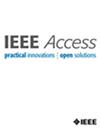C-Coil: A High Performance Computing Approach for Magnetostatic Circular Coil Calculations
IF 3.4
3区 计算机科学
Q2 COMPUTER SCIENCE, INFORMATION SYSTEMS
引用次数: 0
Abstract
Accurate computation of magnetostatic coupling between non-coaxial circular coils remains prohibitively expensive when millions of configurations must be evaluated for design-space exploration. We propose a novel approach based on numerical methods to improve performance by 5 to 7 orders of magnitude while matching the accuracy of state-of-the-art semi-analytical methods. While other approaches strive to reduce the number of integration directions in the six-fold integral to 2 or 4, we propose a five-fold integral with simple-to-evaluate integrands. In place of the filament method, we employ the Gauss-Legendre quadrature due to its exponential convergence and find that numerical integration can be quicker than analytic integral evaluation. Furthermore, to tackle the complexity of allocating the computational resources to each of the five integration directions, we propose a heuristic that leads to 2 orders of magnitude lower computation time or 2 to 4 orders of magnitude higher accuracy. We also provide an implementation of our approach in C-Coil, an open-source C++ library with Python bindings that can also be used in MATLAB.C-Coil:一种用于静磁圆线圈计算的高性能计算方法
当必须评估数百万种结构以进行设计空间探索时,非同轴圆线圈之间的静磁耦合的精确计算仍然非常昂贵。我们提出了一种基于数值方法的新方法,以提高5到7个数量级的性能,同时匹配最先进的半分析方法的精度。当其他方法努力将六重积分中的积分方向数量减少到2或4时,我们提出了一个具有简单求值积分的五重积分。由于高斯-勒让德正交法具有指数收敛性,我们采用它来代替细丝法,并发现数值积分比解析积分计算更快。此外,为了解决在五个积分方向上分配计算资源的复杂性,我们提出了一种启发式方法,可以将计算时间降低2个数量级或将精度提高2到4个数量级。我们还在C- coil中提供了我们的方法的实现,C- coil是一个带有Python绑定的开源c++库,也可以在MATLAB中使用。
本文章由计算机程序翻译,如有差异,请以英文原文为准。
求助全文
约1分钟内获得全文
求助全文
来源期刊

IEEE Access
COMPUTER SCIENCE, INFORMATION SYSTEMSENGIN-ENGINEERING, ELECTRICAL & ELECTRONIC
CiteScore
9.80
自引率
7.70%
发文量
6673
审稿时长
6 weeks
期刊介绍:
IEEE Access® is a multidisciplinary, open access (OA), applications-oriented, all-electronic archival journal that continuously presents the results of original research or development across all of IEEE''s fields of interest.
IEEE Access will publish articles that are of high interest to readers, original, technically correct, and clearly presented. Supported by author publication charges (APC), its hallmarks are a rapid peer review and publication process with open access to all readers. Unlike IEEE''s traditional Transactions or Journals, reviews are "binary", in that reviewers will either Accept or Reject an article in the form it is submitted in order to achieve rapid turnaround. Especially encouraged are submissions on:
Multidisciplinary topics, or applications-oriented articles and negative results that do not fit within the scope of IEEE''s traditional journals.
Practical articles discussing new experiments or measurement techniques, interesting solutions to engineering.
Development of new or improved fabrication or manufacturing techniques.
Reviews or survey articles of new or evolving fields oriented to assist others in understanding the new area.
 求助内容:
求助内容: 应助结果提醒方式:
应助结果提醒方式:


